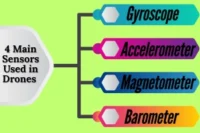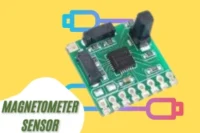Why GPS Auto Return Is a Must-Have Drone Feature
Published: 18 Jul 2025
Most people think flying a drone is all about fun and capturing cool videos. But what if your expensive drone loses signal or runs low on battery mid-flight? That’s where a drone with GPS auto return flips the story. Instead of panic, you feel peace. These drones know exactly where home is and fly back on their own. It’s not just smart tech—it’s a smart decision. Whether you’re new or experienced, this feature makes flying safer, easier, and stress-free.
How Does a Drone with GPS Auto Return Work
A drone with GPS auto return uses signals from satellites in the sky to know where it is. This system is called GPS, or Global Positioning System. When you start your drone and take off, it connects to these satellites. It then saves the exact spot where it took off from. This place is called the “home point.”
Once the home point is locked, the drone keeps flying as usual. But if something goes wrong—like the battery starts to die, or the signal between the drone and the remote controller is lost—the drone doesn’t just hover or crash. Instead, it quickly turns around and flies back to the home point all by itself. You can also press a button anytime to make it return manually.
How It All Works Together
Simple flight flow that shows how GPS auto return works in real life:
Takeoff : You launch the drone into the air.
GPS Lock : It connects to satellites and saves the home point.
Flight : You explore and fly around.
Issue Happens : Battery drops, signal is lost, or you press return.
Auto Return : The drone turns and heads back automatically.
Landing : It lands safely at the spot it took off from.
Different Ways a Drone Can Return Home
GPS auto return is not just one feature, it works in a few different ways depending on the situation. Each type of return function helps protect your drone in a unique way.
Return on Low Battery
This function activates when the drone’s battery drops to a certain level. The goal is to make sure the drone has enough power to return safely.
- The drone monitors battery levels during flight.
- When the battery reaches a set limit, it automatically turns around.
- It flies back to the saved home point and lands before power runs out.
- This helps prevent crashes caused by sudden battery failure.
Return on Signal Loss
Sometimes the signal between your drone and controller breaks. This feature keeps your drone from getting lost.
- The drone constantly checks its connection with the remote controller.
- If the signal drops or disconnects completely, the drone activates auto return.
- It uses GPS to find its way back to the home point.
- Once the signal is restored, you may regain control, or the drone may land on its own.
Manual Return to Home (RTH)
This is the return mode you control. It’s a simple, one-touch safety feature you can use at any time.
- Most drones have a “Return to Home” button on the controller or app.
- When you press it, the drone stops what it’s doing.
- It rises to a safe height and flies straight back to the home point.
- This is useful when you’re unsure of the drone’s location or face sudden changes in weather.
Failsafe Return
This mode activates when the drone detects technical issues or unsafe flying conditions.
- The drone senses problems like GPS signal interference, strong winds, or compass errors.
- Instead of continuing the flight, it automatically switches to return mode.
- This adds a second layer of safety, especially in unexpected situations.
- Not all drones offer this, but advanced models include it for extra protection.
Benefits of GPS Auto Return
Whether you’re just starting or already love flying drones, GPS auto return is a powerful feature that adds safety and ease to every flight. Here’s why it’s so useful:
Peace of Mind
You can fly without worrying about losing your drone.
Stress-Free Flying : Even if the drone goes too far or loses signal, it knows how to return home.
No Flyaways : It avoids situations where the drone might get lost or stuck somewhere.
Safe in New Areas : Great when flying in unknown places like hills, forests, or open fields.
Beginner-Friendly
A must-have for new drone pilots.
Corrects Mistakes : If you fly too far or lose control, the drone brings itself back.
Easier Learning Curve : Helps you gain confidence while learning basic flying skills.
No Panic Moments : You don’t have to make fast decisions in tricky situations.
Saves Time and Money
Prevents crashes and expensive repairs.
Protects the Drone : Helps avoid hard landings, trees, or power lines.
Fewer Replacements : You don’t have to buy a new drone after every mistake.
Less Recovery Effort : You save time searching for a lost drone.
Explore with Confidence
Fly longer and go further without fear.
Go Farther Safely : You can enjoy flying at greater distances knowing your drone will return.
Try New Spots : Explore lakes, cliffs, or cities without being afraid of losing control.
More Flight Freedom : Focus on capturing great shots, not finding your way back.
Things to Check Before Takeoff
Before you launch your drone, it’s important to double-check a few things. These simple steps help prevent crashes, signal loss, or getting your drone stuck. Let’s break them down:
GPS Lock : Wait until your drone shows a strong GPS signal. This helps it stay stable in the air and return home safely if needed.
Set Home Point : Make sure the drone sets its takeoff spot as the “home point.” This is where it will return if the battery runs low or it loses signal.
Battery Levels : Always fly with fully charged batteries—both for the drone and the remote controller. Low battery can cut your flight short or cause the drone to drop mid-air.
Return Settings : Set the return-to-home height high enough to clear trees, buildings, or poles. This avoids crashes during auto-return.
Open Launch Area : Pick a wide, open space with a clear view of the sky. Avoid indoor spots or areas with heavy tree cover that block satellite signals.
Popular Drones with GPS Auto Return
If you are looking for a drone that knows how to come home on its own, these models are great choices. They are beginner-friendly and packed with smart return features that make flying safe and fun.
DJI Mini 3 : This lightweight drone is easy to fly and comes with a precise auto-return system that brings it back safely every time.
Holy Stone HS720E : A solid budget pick for new pilots. It has GPS auto return and other safety features without a high price tag.
Autel EVO Nano+ : Small but powerful, this drone offers smart return features and shoots sharp 4K videos—great for travelers and vloggers.
Potensic Dreamer Pro : A reliable mid-range drone with a strong GPS signal, smooth flying, and accurate auto-return even in tricky conditions.
Conclusion
So, guys, in this article, we have covered drones with GPS auto return in detail.
From my experience, once you fly with this feature, you will never want to go back. It’s a smart choice that makes flying safer and more enjoyable, especially for beginners.
If you are planning to buy a drone soon, go for one with GPS return. It’s worth every penny, start exploring your options now.





